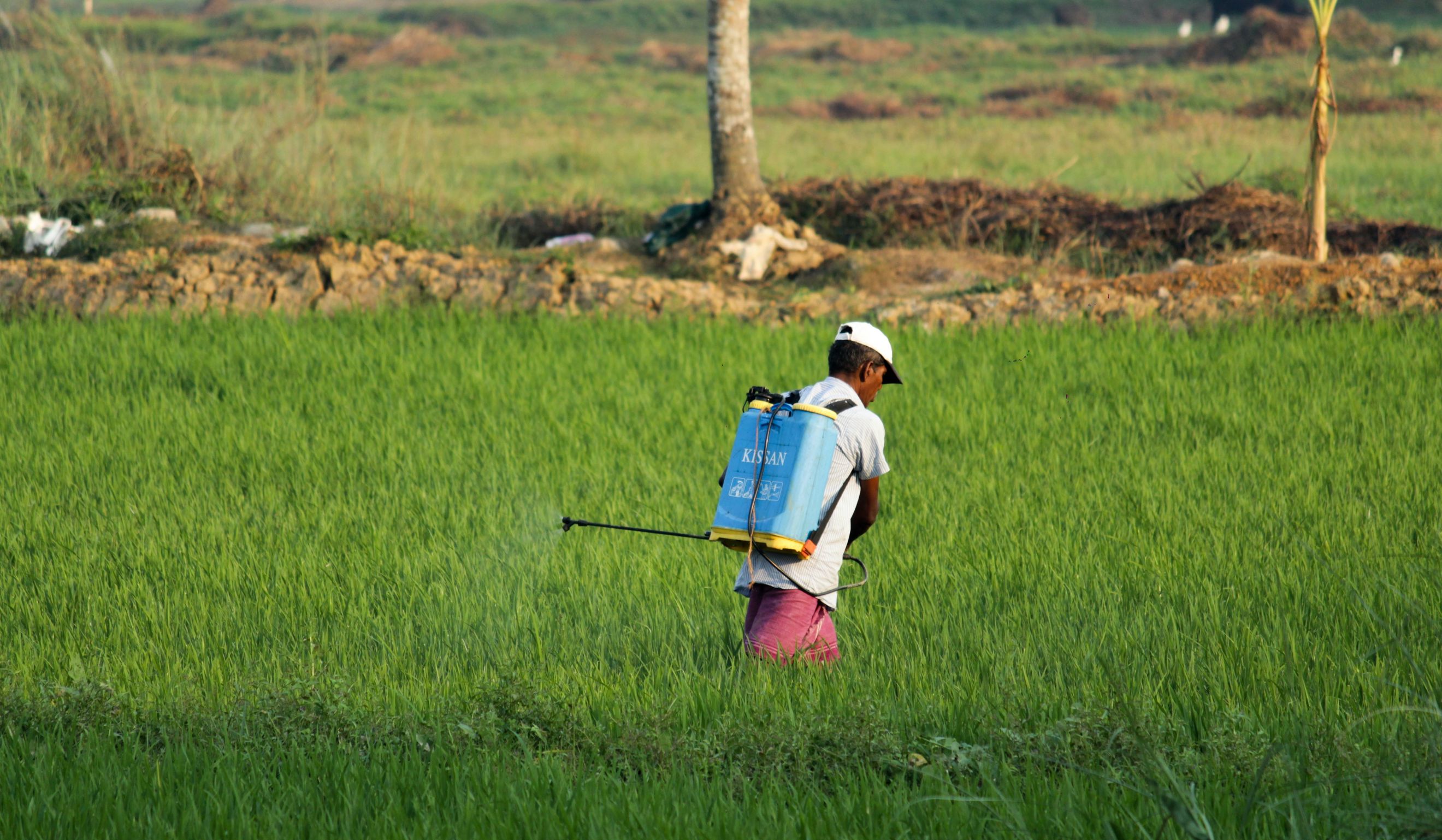
Pesticides and PFAS
'Forever chemicals' can get into pesticides in more ways than previously thought.
Summary: Polyfluoroalkyl compounds ('PFAS') or 'forever chemicals' have been used commercially for more than 80 years and create robust plastics with many useful applications. However they can be potentially harmful to health and are accumulating in humans, animals and the environment at an alarming rate. A number of vectors for that accumulation are known, but now a new study from Civil Eats has found that PFAS can get into pesticides in a number of ways: leaching from plastic containers, in inert ingredients and some active ingredients. The scale of the problem is not yet known so one to monitor closely.
Why this is important: PFAS are widespread in their use and harmful to health. Could there be litigation risk in the future in a similar manner to prosecutions brought for glyphosate or tobacco products?
The big theme: There are two main investing themes discussed here. Firstly the use of PFAS, their potentially harmful impacts on health and well-being. Finding ways of removing PFAS from the environment or indeed finding alternatives require innovation and behavioural change. The second theme is the use of pesticides in agriculture and more general reform. Agriculture sits at the intersection of a number of UN Sustainable Development Goals (UN SDGs). As one reads through the list of goals they are either directly relevant (for example goal 2: zero hunger or goal 3: good health and well-being) or have a causal relationship (for example, education improving with better nutrition and less pollution). Reforming agriculture is a big deal, in terms of greenhouse gas emissions, environmental impact, food security and rural society. But it’s going to require massive social and economic change and disruption, to production methods, to supply chains and to employment. It’s not clear that the political will to change fast enough really exists, which could mean faster and more dramatic change needs to come in the future.

The details
Summary of a story from Civil Eats
An investigation by Civil Eats has found that there are a number of ways in which polyfluoroalkyl compounds ('PFAS') can end up in pesticides. The Environmental Protection Agency (EPA) found that between 20% and 30% of plastic containers were permanently strengthened through a process called 'fluorination' which involves exposing the containers to fluorine gas under high temperature and pressure. However that process also creates PFAS and those PFAS "do leach from container walls into the products they contain" concluded the study. Given the low levels of pesticide testing for PFAS, the scale of the problem is not yet known.
Less well known is that PFAS are also sometimes added as inert ingredients to pesticides to help the liquids disperse and help the active ingredients penetrate the leaves of the plant. However, inert ingredients do not need to be disclosed on the package labelling. The EPA removed 12 PFAS from its list of approved inert ingredients but its review is ongoing so it is still unclear as to whether any others remain on the list.
Finally some active ingredients in pesticides could actually be PFAS themselves. The Maine Board of Pesticides Control want to study a list of 69 active ingredients which which undergone the fluorination process themselves and may qualify as PFAS under a broad definition based on chemical structure. In recent years the fluorination of pesticides has become more common.
Why this is important
PFAS, which do not occur naturally, are commonly referred to as “forever chemicals” because they don’t naturally break down over time. There are more than 10,000 chemicals classified as PFAS and they have been used commercially for more than 80 years. Food packaging, plastic containers, non-stick pans, fabrics, electronics, fire-fighting foams and cosmetics are just some of the applications that they are commonly used in. As well as being 'forever' they are increasingly 'everywhere'. For example PFAS have been found in 83% of US waterways across 34 states. Sewage sludge, marketed as 'biosolids' has been found to have polluted both cropland and also home fertilisers with PFAS. They have even been found in Arctic ice, where melting is leaking them out at high concentration levels.
PFAS can accumulate in humans, animals and the environment. For example a study in Germany found that 20% of samples from children between the ages of three and seventeen had levels of certain PFAS above safe levels as determined by the Human Biomonitoring Commission. They have been found to be harmful to health in a number of ways from neurological disorders to birth defects to certain cancers and reduced kidney function.
The EPA launched a challenge to find innovative ways to destroy PFAS and scientists at York University in Toronto, Canada have come up with a potentially cheap and low temperature method for degrading some types of PFAS. There may be natural alternatives too. Researchers from Flinders University found that the common Australian high growth wetland plant Juncus sarophorus can remove PFAS from both water and soil. This is an example of phytoremediation. We discussed another in a Daily Perspective on metallophytes. Another plant that could potentially remove PFAs from soil is Hemp.
The findings from the Civil Eats investigation adds pesticides as a potentially significant vector for PFAS into food and water systems. Why do we need pesticides? Chemical pesticides essentially help farmers grow more food on less land by protecting crops from weeds, disease and pests. There are natural practices that in some cases have been used for hundreds of years as alternatives to chemical pesticides (for example ducks and even ants). Genetically modified crops could provide crops that are inherently more resilient to pests (although there are still some concerns) and new technological ways of cultivating can improve yields per area of land, such as vertical farming. At a higher level, one could also consider whether we are producing too much food and rather than focusing on farm productivity we should be focussing on total system efficiency? Our long blog "Feed the world: changes to feed and Total Resource Productivity" discusses just that.
Are there alternatives to PFAS? Do we really need them? Use cases for PFAS range from the nonessential (for example non-stick frying pans) to the substitutable (for example, waterproof coatings) to the essential (for example as coatings for medical stents) although in some cases which category they fit in is debatable. In areas such as food packaging, there is arguably plenty that we can do. There are a number of PFA-free packaging suppliers here, for example. There are also coatings that can improve the shelf life of produce too. Harvard TH Chan School of Public Health and Nanyang Technological University developed biodegradable food packaging that uses zein, a corn protein, along with starch and natural biopolymers, including citric acid and thyme oil, to make their waterproof packaging which, in a trial kept a pack of strawberries fresh for a week compared with the usual four days of freshness provided by conventional packaging. Other examples include Sufresca – an Israeli start-up using a water-based biodegradable coating applied to fruits and vegetables and Apeel which has a food-safe powder coating which acts as a barrier against oxygen and water to prevent spoilage.
As well as the direct health risks that are mentioned above, two other issues with PFAS to bear in mind. There is growing evidence that microplastics, which may contain PFAs, may harbour antibiotic resistant bacteria, and a study from the New Jersey Institute of Technology estimated that certain strains of bacteria had 30 times the level of resistant genes in biofilms on microplastics than those on sand. There are also potential greenhouse gas emissions from the production of plastics. PFAs and hydrochlorofluorocarbons such as HFCF-22 can be released during plastics production. HFCF-22 is in fact one of a number of substances banned under the Montreal Protocol that came into force in 1989 to protect the ozone layer. Another example of the interlinkage between environment, health and agriculture.
Something a little more bespoke?
Get in touch if there is a particular topic you would like us to write on. Just for you.
Contact us
Please read: important legal stuff.

